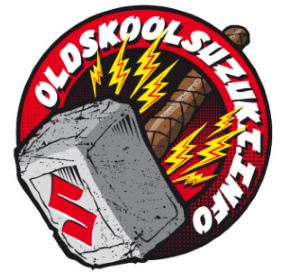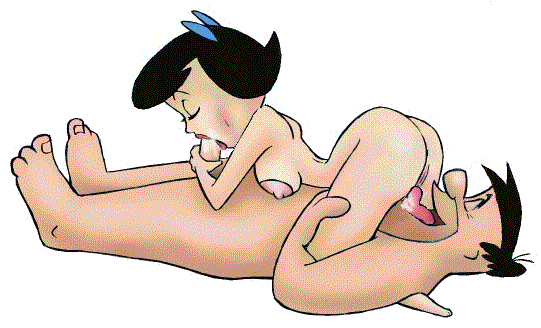-
Posts
5,758 -
Joined
-
Last visited
Content Type
Profiles
Forums
Events
Everything posted by Gixer1460
-
You are overthinking this - 520 = sufficiently strong, 530/532 = more than adequately strong, 630 = bridge building type over engineered for low powered 80's 'superbikes'!
-
Don't really keep note of miles or age - just change when required. I guess using all the power all the time, chain life could be measured in days not years LOL! I think i've got a DID X ring chain at the moment but that's fairly low miles.
-
As a supplier they have to be conservative in their recommendations - plenty on here use 520 chain on 130+hp bikes and I have a 530 chain with 370hp - I just have to change it a bit more frequently LOL!
-
I don't know your particular situation but its a bit unfair to blame the piston supplier when its generally agreed that the barrels are bored / honed to size of the pistons not expect the pistons to just 'fit' your holes unless its OEM.
-
Unfortunately true - check out vapour blasting definition . . . . . it's using abrasive media in a fluid as opposed to air with traditional blasting. Soda is used with air and as it is water soluble it can't be used in a vapour process! You can use lighter / softer medium with vapour that can clean softer metals, even painted fabrics, but it is still abrasive or it wouldn't clean and IT needs cleaning out, hence the advantages of ultrasonic fizzy water. Any abrasive doesn't distinguish between dirty metal or clean metal and if hard enough it won't just remove dirt!
-
Agreed - but seriously, use of ANY abrasive media inside a carb is mad! Abrasives make small holes bigger so best avoided - non destructive ultrasonic's is the safest way IMO!
-
That'll be alcohol LOL!
-
Yeah - not a particularly great idea!
-
Sort of limits your options then to wherever the wires will reach - Its a lot easier if you extend the wires - not particularly the big battery ones just the smaller gauge ones! Mine always live close to that battery wherever that happens to be!
-
Re the Mixture screws - having the caps already removed is a bad sign ie. someone before you has likely been tampering and so whatever is there now may or may not be the stock settings ! ! ! To check the setting - look at where the screw head is now and then slowly and gently screw it in till it bottoms out - DON'T FORCE IT ! whilst counting the rotations. Most stock screws are usually between 1 and 2.5 turns from closed and will vary in 1/8 turn increments - i'd start at 1.5 turns ?
-
I know about the capping but its put there for a reason - to stop unknowledgeable, tampering fingers from fucking up the settings! If its stock, then it don't need touching!
-
Took me three times as long to download than to find the info............. you can't adjust it - its fixed to stop tampering! PS you can't get better than a genuine manufacturer workshop manual!
-
For a NA engine those numbers around idle / mid range are waaaay to rich, almost potentially bore wash rich! Yes address the MJ but that is an area the gets used the least and it the carbs are off anyway you might as well jet and needle down the bottom end at the same time! Also for consistency, tuning on the road needs the engine under load so you need a looooong uphill stretch - a long flat just flatlines the load once you hit a particular rpm! Not knocking the enthusiasm but this could all be done in an hour on a dyno?
-
Be wary with a run in 5th ! All dynojet dyno's have a speed limit of 200mph wheel speed hence why most use 4th - don't know about others but a half ton roller @ 10k rpm would pretty much go through anything if it got loose LOL!
-
Is this occurring on the dyno? It's a fairly abnormal operating condition ie. high load (tall gear) applied at a low rpm. If the dyno run was done 'all gear' you'd probably find it doesn't occur or to a lesser degree as the wheel speed is higher at lower load (gear) so the lock up tend to engage and apply pressure - just a theory?
-
If I don't deliver it in 'the nicest way' it's because you frustrate the hell out of me! A lot of us learnt this the hard way, before the internet and instant response answers either from fathers, brothers, relatives or one step at a time with a few tools and a manual for guidance! Stop thinking about shit you don't understand, stop buying crap you don't know how it works and spend the best $25-30 you'll ever spend and just buy a f**kin manual that will pretty much answer all your questions!
-
High maintenance Drama Queen LOL! I used to take dry plates out and put clean dry plates back into Kev's ProMod slider for consistency - no oil ever on those fibres, just brake cleaner LOL!
-
He won't listen ! And he doesn't know what std. is as he hasn't bought a manual yet!
-
You've two ratio's to deal with. 1st is master cyl bore area vs. Caliper piston bore area - this influences the pressure exerted on the pistons and lever travel will be a function to achieve that. 2nd is lever pivot ratio ie. how far the Master cyl. piston is moved relative to lever movement. Both will have an influence on lever movement and feel. With a multi adjustable lever the brake lever can develope the same line pressure but be light pull or hard pull, just be varying the pivot point / mechanical advantage in the perch!
-
Deffo fixed from below!
-
You need to work out total piston area of single piston against the double pistons. if comparable then the change from 14mm to 5/8" (15mm roughly) will have a slightly longer pull but pressure will be slightly higher. If the piston area is smaller (single to double) then the pull distance should be similar and opposite if greater. Only you'll know if the feel will be acceptable to you!
-
Not from 'Katana' model but fairly sure will be same unless they are engraved ? - still available . . . . . part # 11174-34201 in the USA at least @ about $30 each! Pssst. they aren't valve inspection covers - they are just covers!
-
I concur with Arttu's experience - my big hp turbo uses nothing more than 4x 12mm SS cap heads and SS nylocs - total. I know the pressure plate hub is fairly good condition ie. barely marked, its low miles but the engine has never not had a turbo fitted. Std.Suzuki plates and cheap as chips mineral oil changed regular seems to work. The old Kawazuki didn't run any weights on the arms at all - guess I was lucky?
-
wouldn't an inlet leak make the burn hotter due to lean / excess air unless it's so leaky as to not run properly which should be more obvious ?
-
There are - look again !



